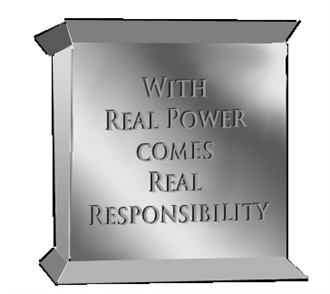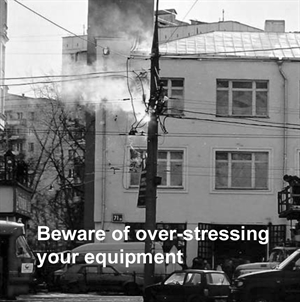Sustainability: How to achieve it
This month we are looking at sustainability. It’s become a buzz-word in recent years and has taken on implications of “environmental friendliness”, planning for the long term and using energy and materials in a more efficient way. Our focus for this article is on ways that CEE can help your business to design and manage your power systems to make the best use of available energy and equipment. Our power system studies using Power*Tools for Windows (PTW) can help you to improve your business’s sustainability, reduce waste and enhance productivity:
Improve your Power Factor
Historically, energy companies found it very difficult to monitor the power factors of their customers’ power systems. Old electro-mechanical energy meters use a motor to measure how much electric current is passing; they can therefore only measure the “Real” (Active) power consumed by the customer because only the “Real” power causes the motor to spin. Limits are placed on electricity consumers to ensure that their power factor is within acceptable limits but beyond this, power factor was often ignored. However, improving your power factor can allow your system to draw lower electric currents while still achieving the same amount of useful work. This not only improves energy efficiency but reduces your electricity bills!
The Carbon Trust has issued this useful guide to what "power factor" means and how it may be improved. If you want to find out how power factor could be improved on your system, CEE can calculate the size and rating of power factor correction capacitors you would need to achieve optimal savings.
The Carbon Trust has issued this useful guide to what "power factor" means and how it may be improved. If you want to find out how power factor could be improved on your system, CEE can calculate the size and rating of power factor correction capacitors you would need to achieve optimal savings.

Run as few generators as possible
If your system runs permanently or temporarily “islanded” (powered from generators alone with no grid in-feed) then it is important to size your generators according to the anticipated demand. Too few generators may not be able to support the load especially when large motors are starting; too many will cause the generators to run at low capacity and waste fuel. If induction generators are used, running them at low capacity has a negative effect on the overall power factor! For large industrial plant it is sometimes advantageous to run several generators in parallel and to switch off some generators during periods of low demand. This can often be preferable to running a single, large generator even if the nameplate efficiency of the large generator is higher!
CEE can help you to plan and manage a generator-supported system by answering some key questions:
CEE can help you to plan and manage a generator-supported system by answering some key questions:

- What is the most power I am likely to need at any one time?
- What is the least power?
- How will my circuit breaker protection settings need to change if I temporarily switch off one or more generators?
- What size will my generator cables need to be?
- If I implement a demand management or load-shedding system, could I use fewer, or smaller, generators?
Get some “Free” energy
Solar photovoltaic generators (Solar cells) and wind turbines are often cited as “Sustainable” means to generate power since the “fuel” (sunlight or wind respectively) produces no carbon emissions and is essentially “free”. There are other forms of sustainable energy generation which may apply to your business; turbines driven by flue gasses or waste heat will make use of energy that would otherwise be wasted. Alternatively, combustion engines running on waste methane or digester gases can generate energy sustainably since they convert harmful methane into less harmful carbon dioxide.
Businesses considering the addition of generators like these will need to plan carefully ensuring that they fully understand the effect on the power system. Making use of PTW’s Wind Generator and Solar PV Generator models in addition to classic grid connection and synchronous generator models, CEE can demonstrate how your power system would change if sustainable energy sources were added. This could include:
Businesses considering the addition of generators like these will need to plan carefully ensuring that they fully understand the effect on the power system. Making use of PTW’s Wind Generator and Solar PV Generator models in addition to classic grid connection and synchronous generator models, CEE can demonstrate how your power system would change if sustainable energy sources were added. This could include:
- How maximum and minimum fault levels would change
- What harmonics might be introduced?
- Would circuit breaker / protective device settings need to change?
Share your energy
If your power system generates energy and has “slack” periods where capacity is higher than demand, excess energy can be sold to the grid. Obviously, this could be a useful source of revenue but it can also improve sustainability by utilising generators more efficiently. This is also a great way of improving payback on those sources of “free” energy that would otherwise have to be turned off. The catch is that in the UK, businesses must be licensed to export large amounts of energy to the grid. The licensing process is covered by the guideline G59/3 produced by the Energy Networks Association (ENA). CEE can create a model of your power system to determine what type of license your business will need to apply for.
If your business is planning to add a new grid connection there is an additional guideline to follow; G5/4 which may require amongst other things, a study of what power systems harmonics may be introduced. In a G5/4 study, there are several levels of complexity depending on the grid connection voltage and the amount of power to be exported.
It is known that harmonics cause problems in power systems, as was highlighted in the April newsletter . It is also a known issue that Solar PV generators are often significant sources of harmonic distortion. The aim of a G5/4 study is to prove that the new grid connection will not push harmonic distortion outside of acceptable limits. CEE has experience of carrying out G5/4 studies and can help you determine if the harmonics on your system are within the required limits. For problematic systems, CEE can also calculate the required size of harmonic filter.
It is known that harmonics cause problems in power systems, as was highlighted in the April newsletter . It is also a known issue that Solar PV generators are often significant sources of harmonic distortion. The aim of a G5/4 study is to prove that the new grid connection will not push harmonic distortion outside of acceptable limits. CEE has experience of carrying out G5/4 studies and can help you determine if the harmonics on your system are within the required limits. For problematic systems, CEE can also calculate the required size of harmonic filter.
Size your transformers correctly
Some industrial power systems operate with transformers that are significantly larger than the maximum demand would require. This can be due to over-engineering, a reduction in site load or extra capacity for future expansion. While these might all be valid reasons to use an over-large transformer it is important to understand that some efficiency will be lost. Transformers have fixed copper losses; the larger the transformer the greater the losses will be. In other words, an over-sized transformer is effectively an unnecessary impedance on your system. If up-stream protective devices have been set to allow the transformer inrush current to pass, they may be set higher than might otherwise be necessary. While high protection settings do not have implications for energy efficiency, they could carry a safety risk.
CEE can model your power system to identify which components are over-sized or under-utilised. In more complex systems it may even be possible to change the operating configuration to use assets in a more efficient manner (such as transferring load between transformers). We can also recommend new protection settings if transformers are replaced.
CEE can model your power system to identify which components are over-sized or under-utilised. In more complex systems it may even be possible to change the operating configuration to use assets in a more efficient manner (such as transferring load between transformers). We can also recommend new protection settings if transformers are replaced.
Live longer
Equipment “life” is just as important to sustainability as energy efficiency, since replacing and decommissioning broken equipment expends a great deal of energy and materials. Naturally you want to get the most out of your power system and use it to its full potential, but is there a risk of over-stressing some components?
A PTW study by CEE can identify any components which may be operating close to, or beyond, their design capability. We can also consider factors which may have invalidated the original system design calculations. These may include over-loading cable trays (causing cables to over-heat and lowering their current capacity); adding VFDs to motors (injecting current harmonics which can cause arcing across contactor terminals and reduce their life); or frequent switching operations that can lead to switchgear wear.
A PTW study by CEE can identify any components which may be operating close to, or beyond, their design capability. We can also consider factors which may have invalidated the original system design calculations. These may include over-loading cable trays (causing cables to over-heat and lowering their current capacity); adding VFDs to motors (injecting current harmonics which can cause arcing across contactor terminals and reduce their life); or frequent switching operations that can lead to switchgear wear.

If sustainability is important to you, why not join us at EDIE Live in Birmingham later this month?
In the meantime, click here for the EDIE blog featuring hot topics in industry.
In the meantime, click here for the EDIE blog featuring hot topics in industry.